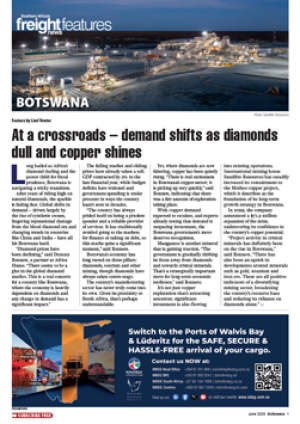MUCH HAS been written in recent weeks about the state of South Africa's ports.
The problems of go slows and productivity levels in Cape Town come to mind, as does the proposed, but subsequently withdrawn, imposition of fines on shipowners whose forecasting and documentation fall short of the standards set by Portnet.
There is no doubt that uncertainties regarding the future of Portnet have contributed to this malaise. A speedy resolution of this issue is therefore important in bringing about constructive dialogue, rather than conflict, between port management and labour on the one hand, and between port management and its clients on the other.
Elements crucial to the planning process can be summed up as follows:
n Open up
competition between ports.
This is more important than privatisation. Although it is difficult to create a competitive environment without the involvement of private enterprise, this has been achieved elsewhere.
The fact of the matter is that until Cape Town, for example, sees Durban as a competitor for business, it is unlikely to strive for the efficiencies it needs to win and retain business.
n Get rid of wharfage charges that are simply a tax on trade.
n Create a
management style that treats the client as
the key to the
success of the business.
A port's client list is long and includes not only shipowners but all those who either own the cargo that moves across its quays or those who facilitate these movements such as clearers and forwarders and providers of transport to and from the port.
Portnet should not be seen to be disagreeing with its major clients in the press, nor trying to impose regulations instead of agreeing terms of trade.
n Create job opportunities.
The plan for the future of
the ports must not be seen as simply reducing manpower. Rather, the restructuring of the industry should be seen as an opportunity to add value, increase volumes and thereby create jobs, both within the ports themselves and through increasing South Africa's trade in general.
There is in fact plenty of good in South Africa's ports. The infrastructure is in place, and there are many managers who want to give good service to their clients, as well as a workforce capable of delivering the product. What they need is a framework and the leadership to allow and encourage them to deliver.
